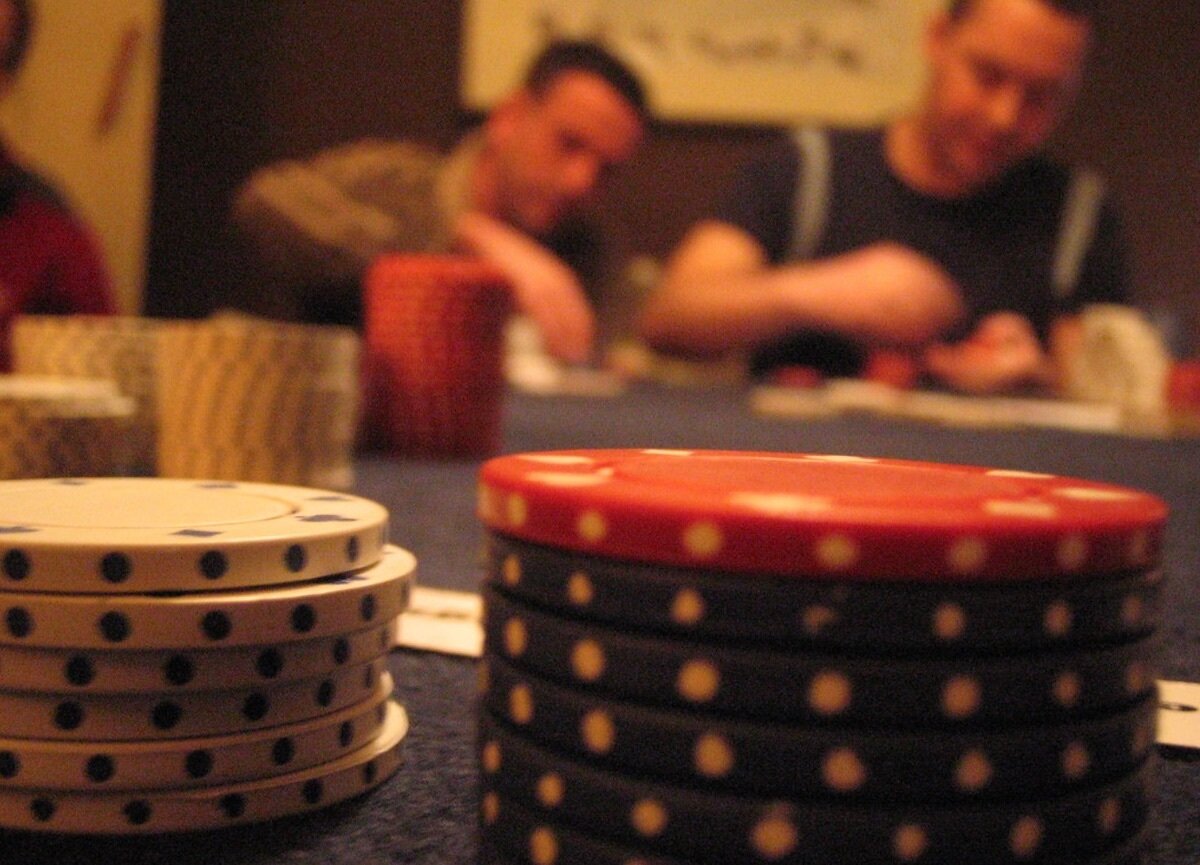Understanding hand ranges isn’t just theory—it’s the key to making smarter, more profitable decisions at the table. Whether you're grinding…
Read More7 Essentials for Setting Up Your Own Poker Night at Home

1. Feed Your Friends
There simply isn’t a good poker night at home without good food. Whatever you provide, you must make sure it’s better than what Oscar serves up at poker night in the 1968 movie, The Odd Couple. Producing ‘green’ sandwiches, he describes the filling as “Either very new cheese or very old meat.”
Providing a range of different things to eat without being financially punished for being the host is a tricky balance. Here are some of our go-to snacks that won’t break the host’s piggy bank:
- Tortilla Chips
- Potato Chips
- Home-made Sandwiches
- Home-made slaw and dip
- Burgers
- Hot Dogs
- Pizza
You want your friends or family to feel fed but not bloated to the extent that the action slows down. Ever have a huge meal and just want to sit in an easy chair, slumped back not concentrating on what you’re playing? That’s a killer to the atmosphere of fun and frivolity you’re trying to create. Keep it simple, fresh and if food is served hot, make sure that its piping.
2. Drinking Games
Making sure no one is thirsty while preventing the night doesn’t descend into drunken madness is key. Providing the right drink for every player is a near-impossible task. You simply can’t stretch to three different types of wine, beer, and cider, and start throwing in a bottle of every spirit without leaving yourself out of pocket before you’ve found a pocket pair.
Compromising is wise here. Take a straw poll of your friends on whether they’d prefer beer or cider then make a purchase that heads for quality rather than quantity. You want loose play, not horizontal.
When it comes to spirits, it’s best to stick to one or two that you know your pals will drink if they fancy it, rather than tequila or sambuca. If you bring out a bottle of vodka, there’s a good chance that it’ll either be consumed on the night or you’ll take care of it at a later date. Present an odd-shaped bottle of coloured spirits and you could easily be tossing it in the trash half-full in a year’s time.
3. Atmosphere
Choosing players carefully is perhaps the key to setting up a poker night. Just as playing poker with a room full of nits would be as much fun as going rock climbing with your mother-in-law, so too would playing in a poker room full of maniacs. Just like in professional coffee making, picking the right blend is essential.
You want a few players to get the action going, but you also need players who level that balance up and combat aggressive play in their own style. You want talkers – people who tell anecdotes. But you also need audience members to laugh at the punchline rather than simply wait to tell their own bad beat.
Setting up the right musical ambience helps, as does knowing whether your happy home gamers are smokers, drinkers or not. If you share the house with a partner, it is advisable to lay down some ground rules with your players before the cards are in the air. Presuming you share a street with neighbors, putting a limit on how much the fun escalates is your responsibility and should be taken seriously.
4. Late Night Poker
How long should the game run? This is the biggest question to answer once your game has begun. Is it a cash game, a tournament or several Sit ‘N’ Go’s, each with a timed limit? Making sure you have a handle on when the fun starts and stops will keep your guests satisfied. Alternatively, having no idea when games will run until or whether they are involving everyone in the room might clear your room as quickly as it fills.
Setting a time limit to fun sounds prescriptive and is maybe a bad idea, but having a target time in mind as host takes no time at all to organize and can benefit everyone.
Let’s say you’re playing Sit ‘N’ Go tournaments that last approximately an hour each and while each one plays out, cash games are played between eliminated players. This is relatively simple to set up even with only 8-10 players. If everyone knows that once the last Sit ‘N’ Go begins, there’ll be around an hour until the chips go away, then you should leave each player wanting to return.
5. Welcoming Party
This is the main point of having a poker home game; everyone should want to come back. If you’ve played it right, then by now, everyone is having a great time. Maintaining that is the essential job of a host. It’s easy to get sucked into thinking that once you’re playing poker, you can forget about your guests because they’re all having as great a time as you are.
That may not be true.
While you’re reaching the heads-up in a poker tournament, three of your friends might feel like they can’t play the cash game with confidence. Sitting deep in cash but not keeping your eye on the tournament? Players heading into the money places might be too busy playing to top up their drinks.
Playing host comes at the natural cost of being able to focus on playing poker. Rather than fight this, embrace it. Set expectations for your own enjoyment of the evening and build them around your guests rather than yourself – the night will be a roaring success.
6. Chips and Blinds
Chip denominations and blind structure are what keep the game flowing. Chips aren’t hard to come by and for comparatively cheap, so don’t bring out a plastic poker set with chips that are light as a feather. Buy enough high-quality clay chips that your players can feel like they’re in a casino or at the very least, their local bar. They’ll want to play at yours again because the quality of the chips – and cards – are good.
You’ll also be OK to bring out the same set again, saving on costs after that initial laying out of money. If you get good quality cards and long-lasting chips, then each subsequent poker night should just be about proving food and drink and replicating the atmosphere that makes you place a great way to play poker!
When it comes to setting up the blinds for your tournament or cash games, it’s well worth inviting a couple of your close friends around during the week before you host a poker night and play it through as a ‘dummy run’. That way, you’ll find out if your game is too fast or too slow, too difficult to control or unplayably slow.
7. Setting the Table
Finally, the last point is a simple one to check, but one that many people hosting a poker night overlook to their cost. Have you got enough tables and chairs to hold your players? If you’re playing with a casino-top table, will one be enough?
If you can’t stretch to a realistic professional table – and they can be expensive to explain to a partner – then start out with tabletops. They can be folded up, along with foldable chairs if you don’t have enough round your dining table and easily stored away ready for next time.
Summary
Whenever you next stage a poker night, remember these quick tips to improve your night:
- Provide a variety of food for guests, but don’t break the bank or overfill.
- Canvas popular drinks and lean towards quality rather than quantity.
- Choose your players wisely and set the room’s ambience early.
- Set an internal time limit for the night and when its approaching, let people know.
- Focus on your guests rather than your own profit and loss column.
- Make sure you have quality chips and cards and set enjoyable blind levels.
- Get the right table(s) and chairs in before your game begins.



